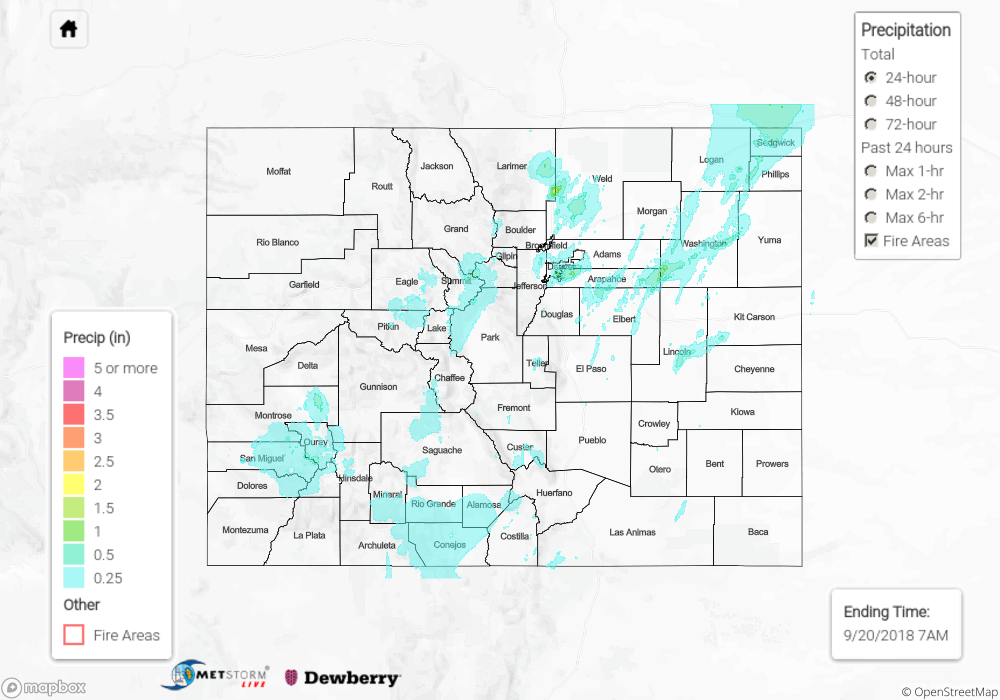Issue Date: Thursday, September 20th, 2018
Issue Time: 10:05 AM MDT
Summary:
Quite an active weather day across the state yesterday. As the trough began to move eastward, a moisture plume was pulled northward into the state. With support of upper-level dynamics, including a cold front over eastern Colorado, widespread showers and thunderstorms returned to the forecast on Wednesday. Showers started over the southwest corner of the state and spread northward creating a line of storms oriented from southwest to northeast. Storms over western Colorado were generally lighter as not as much instability was able to build with storms starting during the late morning. Nonetheless, there was some beneficial rainfall for the San Juan and Central Mountains. Generally, totals were between 0.25 and 0.5 inches with lower elevations recording up to 0.1 inches. Even the San Luis Valley got some rainfall. Alamosa recorded around 0.5 inches with a CoCoRaHS station near San Luis recording 0.16 inches.
Over the eastern mountains, totals were greatest over the Front Range. As the storms moved into the adjacent plains (Urban Corridor) they encountered some decent instability and moisture. The Fort Collins Mesonet recorded its highest 24-hour value near Windsor, which was just over 1 inch. Radar rainfall estimates were just over 1.5 inches in the area due to CoCoRaHS stations in the area reporting 2.21 and 1.53 inches. There was some small hail reported with this storm, so we will look into these values as hail contamination might have occurred. Over Denver, the ALERT system had a 24-hour value of 1.26 inches at the Murphy Creek Golf Course site in Aurora. Totals over the metro area were mostly in the 0.3 to 0.7 inch range and produced a nice spike at the Cherry Creek gage (below). An areal flood advisory was issued for southeast Denver, Aurora and Centennial but there were no flood reports as of this morning. Over the eastern plains, storms became severe with a tornado warning in Kit Carson/Cheyenne Counties. Although the storm was capable of producing a tornado, there were no reports of a tornado as of this morning. Rainfall totals just over an inch were reported with these storms.
To see how much rain fell over your area yesterday, scroll down to the State Precipitation Map below.
Click Here For Map Overview
The map below shows radar-estimated, rainfall gage-adjusted Quantitative Precipitation Estimates (QPE) across Colorado. The map is updated daily during the operational season (May 1 – Sep 30) by 11AM. The following six layers are currently available: 24-hour, 48-hour and 72-hour total precipitation, as well as maximum 1-hour, 2-hour and 6-hour precipitation over the past 24 hour period (to estimate where flash flooding may have occurred). The 24-hour, 48-hour and 72-hour total precipitation contain bias corrections that are not disaggregated into the hourly estimates, so there will likely be some differences. The accumulation ending time is 7AM of the date shown in the bottom right corner. Also shown optionally are fire burn areas (post 2012), which are updated throughout the season to include new burn areas. The home button in the top left corner resets the map to the original zoom.
